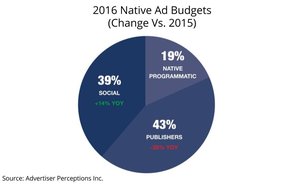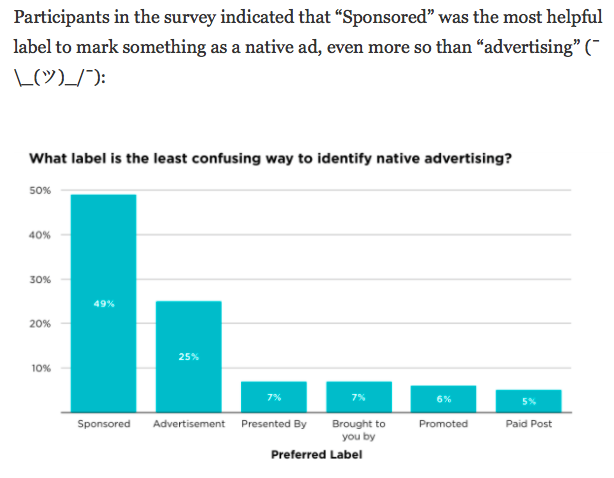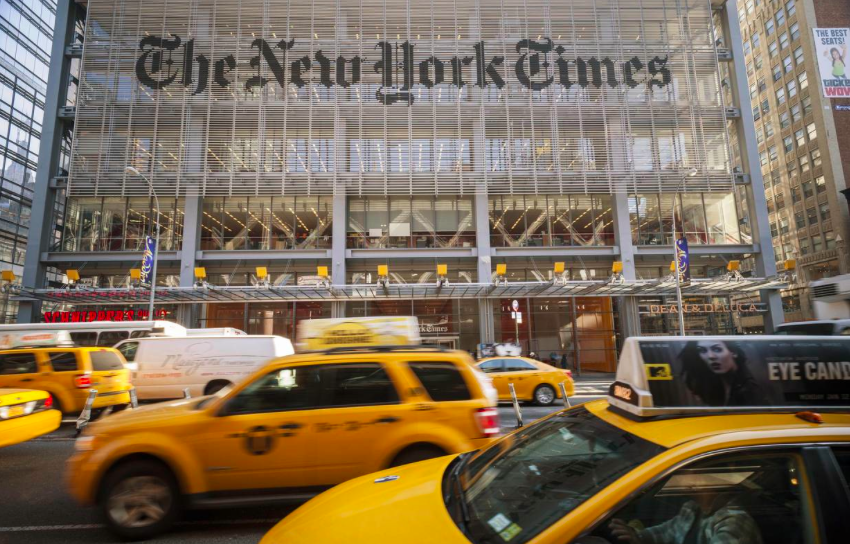Once around the park, James, and don’t spare the sources!
The hardtracking staff has started to discern the dawn of Sneak 2.0 – a second wave of stealth marketing that tries to herd the ads in sheep’s clothing into more profitable quarters.
Start with Joe Mandese’s piece in MediaPost’s MediaDailyNews
Native Ad Plans Shift From Publishers To Social, Facebook Dominates By Wide Margin
Digital publishers may have embraced “native” formats as a godsend for new advertising revenues, but the majority of ad execs are more keen on using the method on social media outlets vs. conventional content publishers. That’s the top-line finding of a new survey of advertisers and agency executives being released today by Advertiser Perceptions Inc., which suggests native advertising is reaching an inflection point that will soon be dominated primarily by social media.
Helpful graphic:
Which is to say: “Currently, ad execs estimate 43% of their native ad budgets are being allocated to conventional publishers, but that is down an average of 25% vs. 2015. Social networks currently account for 39% of the respondents’ native ad budgets, but that is up 14% over 2015.”
Facebook, here they come.
Then again, where native ads run might not matter so much, given this Joe Lazauskas piece at NiemanLab.
Native ads are still very confusing to many readers, a new survey suggests
Can readers tell the difference between news stories produced by a publisher’s editorial arm and the sometimes slippery — but often lucrative— native advertising that runs on publishers’ sites?
Forty-four percent of people shown a native ad couldn’t correctly identify the company that had paid for it, according to recent findings released by the content marketing firm Contently in partnership with the Tow-Knight Center at CUNY and Radius Global Market Research. Fifty-four percent of survey participants indicated that they had felt deceived by native advertising before. And 77 percent of survey participants didn’t even identify native ads as “advertising” — describing it either as “editorial content” (34 percent!) or a hybrid (43 percent).
Excellent! Isn’t that exactly what native advertisers want – confusion between editorial content and marketing material?
This helpful chart only adds to the confusion.
Interestingly, millennials are the group that’s most trusting of native advertising, with 45 percent in the survey indicating they trust it completely/somewhat.
If, that is, they actually know what it is.
And finally, here’s one indication that native ads might not be the salvation of revenue-starved media organizations, via the Wall Street Journal.
Publishers Take On Ad-Agency Roles With Branded Content
Traditional news outlets like New York Times, Wall Street Journal expand into ads, sponsored material
A New York Times Co. staffer recently spent weeks digging into a technology company, visiting engineering departments and interviewing executives to ferret out the best story there was to be told about the firm.
It wasn’t for a hard-hitting exposé. Instead, the writer was working for T Brand Studio, the company’s in-house ad agency, to put together a report commissioned by the media publisher on how best to market itself in an ad campaign.
Publishers are pouring resources into such initiatives as they try to turn their niche “branded content” businesses into significant growth drivers. They are expanding into areas that traditionally have been the domain of advertising agencies—from doing research for companies to creating ads that run outside their own websites.
That fits in with the trend of publishers like the Times branching out into any available source of revenue they can manage, from conferences to chotchkes (see our recent post at kissin’ cousin Campaign Outsider).
Bake sale, anyone?
John R. Carroll is media analyst for NPR's Here & Now and senior news analyst for WBUR in Boston. He also writes at Campaign Outsider and It's Good to Live in a Two-Daily Town.
John R. Carroll has 305 post(s) on Sneak Adtack



